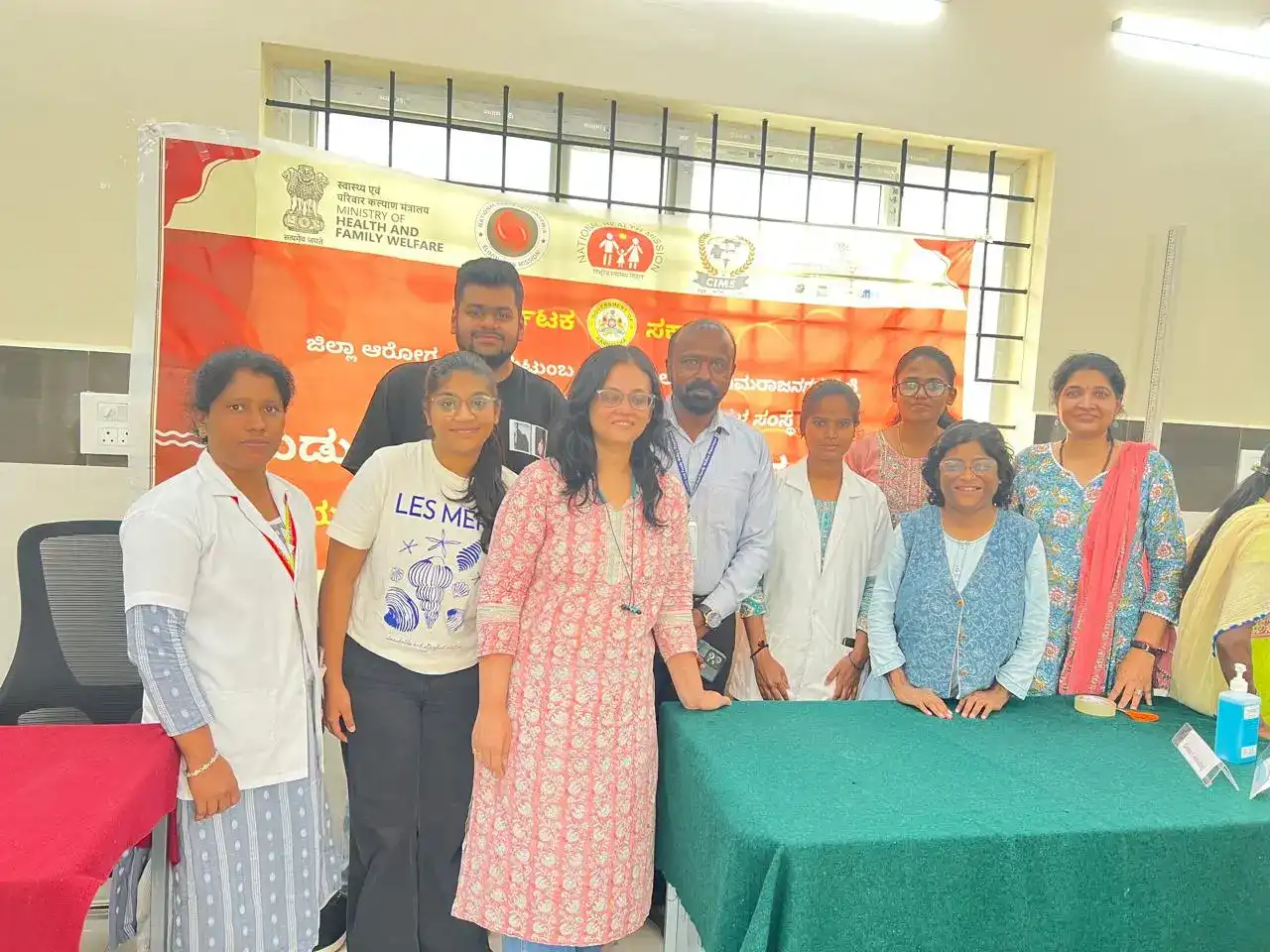Field Visit to Kollegal Government Hospital - How Avni is Transforming Public Health Data Collection
May 19, 2025 by Siddharth Harsh Raj
A firsthand account of how Avni is revolutionizing grassroots healthcare through digital data tools. Insights from a developer's field visit to Kollegal Government Hospital, highlighting the shift from paper-based systems to efficient, real-time digital workflows.
As a developer on the Avni team, I recently had the opportunity to visit Kollegal Government Hospital during the regular monthly health check-up organized by the Institute of Public Health (IPH). This field trip wasn’t just a routine visit—it was an eye-opener into how our work is making a real-world impact in the field of public health. It provided me with invaluable insights into how technology is improving healthcare delivery at the grassroots level.
From Paper Chaos to Digital Efficiency
Before Avni, health professionals at the hospital were buried under heaps of paperwork—registers, reports, and repetitive manual entries. This made data retrieval time-consuming and error-prone.
With Avni, all of that has been replaced by a single app on a single device. The transition from paper to digital has not only streamlined workflows but also:
- Improved data accuracy
- Reduced duplication
- Made patient tracking much more efficient
Health workers can now spend more time with patients instead of paperwork.
Real-Time Insights from Real Users
One of the highlights of the visit was the face-to-face interaction with doctors and field workers actively using the Avni app. These professionals shared how Avni has:
- Reduced redundant data entry
- Improved the speed and accuracy of service delivery
- Enabled faster decision-making through real-time data access
- Allowed better follow-up and continuity of care
They also suggested thoughtful improvements—such as enhanced offline capabilities, better form customization options, and faster sync times. Many of these suggestions are already under review by our product and development teams. The appreciation they expressed for the Avni team’s efforts was deeply motivating and reaffirmed the value of what we’re building.
Key Takeaways as a Developer
1. Empathy-Driven Development
Watching users in action helped me understand their day-to-day challenges better. It’s a reminder that every line of code should solve a real problem. Developing with empathy ensures that the product we create truly supports those who rely on it.
2. Offline-First Design Matters
Rural and remote setups like Kollegal often deal with patchy internet. Avni’s offline-first approach proved to be a game changer, enabling seamless data entry and later synchronization without loss.
3. Iterate Based on Field Feedback
Field insights are gold. Even seemingly small UX tweaks suggested by users could significantly improve usability and adoption. Continuous feedback loops are essential for making a meaningful impact.
Final Thoughts
This trip reinforced the importance of building tools that matter. Seeing Avni in action—reducing chaos, empowering healthcare professionals, and enhancing service delivery—was deeply fulfilling. It reminded me that as developers, we’re not just writing code; we’re crafting solutions that improve lives.
For anyone working in digital health, field exposure like this is essential. It helps bridge the gap between code and care. We’re proud to be a part of this journey toward a healthier, more connected healthcare system.
We’re not just building apps—we’re enabling better health outcomes, one screen at a time.
